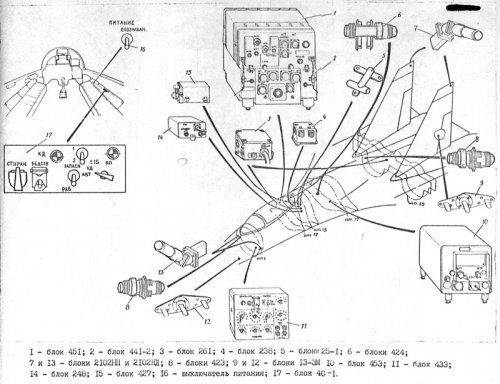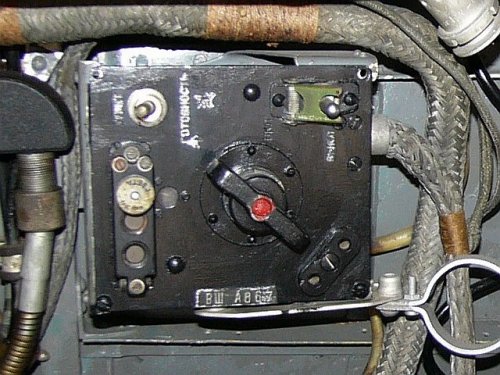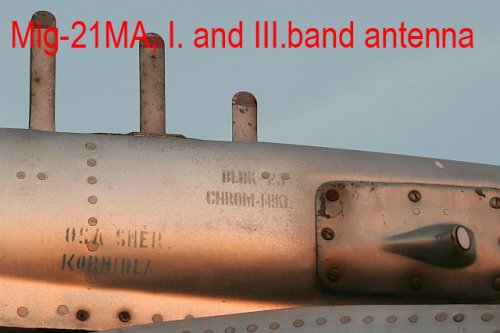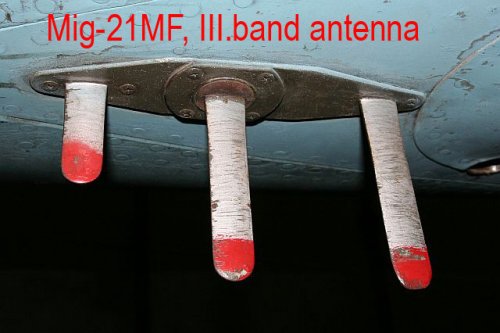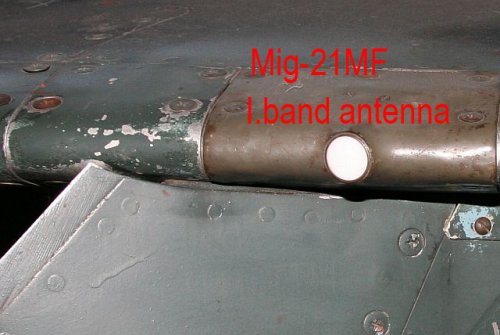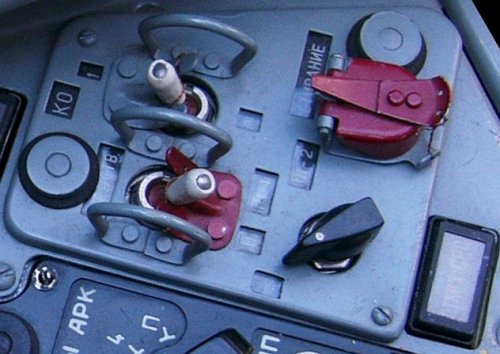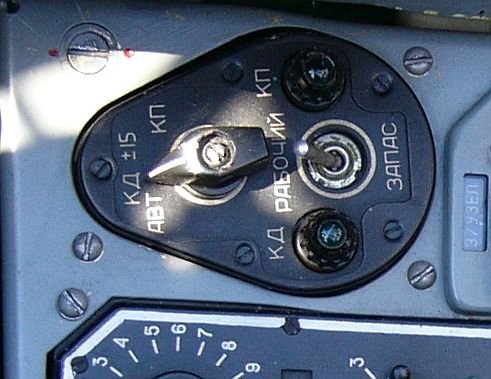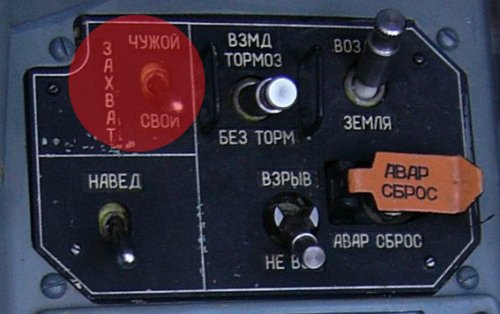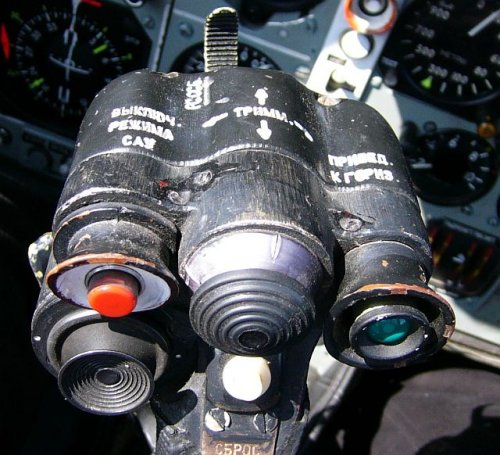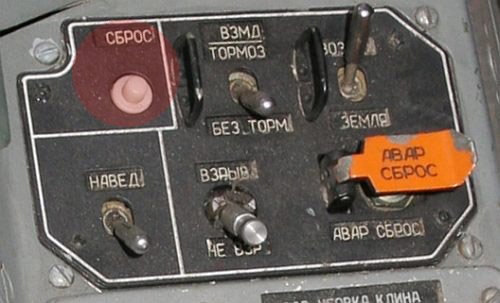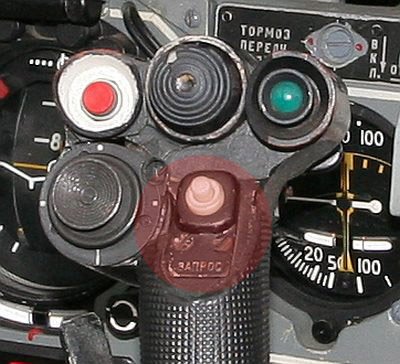Mikhail khodarenok
"Parol" (Password) barely is audible
The situation, arising with the system of state radar identification, suggests the anxiety
Only two states in the world have systems of the state radar identification: Russia (in the united system "Parol" with the states - participants IN THE CIS) and THE USA (in the united system MK-12 with the NATO alliance countries). Presence of the system of this type and its maintenance in the operational state - task at least state. Actually, the presence (on the level with THE USA) of the unique united system of the state radar identification of air, above-water and ground-based objects speaks about the prestige of our state.
Hardly it is worthwhile to explain the importance of existence in the country of the reliable state radar identification system of air, above-water and ground targets. Omissions and underestimation of a similar system very dearly bypass in the combat situation. For example, during October 1973 in the Near East of the loss of national VVS from their air defense weapons they reached: Egypt - to 46%; Syria - to 14%; Libya and Iraq - to 30%. In 1991 during the war in the bay the shooting at friendly troops was reason 15% for all human losses from the side of allies on the anti-Iraqi coalition (forces). On 14 April, 1994, in the zone, forbidden for the flights of Iraqi aircraft, two American helicopters were destroyed by their own destroyers. Pilots two F -15 erroneously identified the pair of army helicopters "Black Hawk" as Iraqi Mi-24. As a result of incident perished 26 English, French and Turkish soldiers.
AS EVERYTHING BEGAN
The first system of state radar identification, put into use in the territory OF THE USSR and its allies, was called "Kremniy-2(2M)". Together with many positive characteristics it possessed two fundamental deficiencies. Most important of them - unsatisfactory spoofing resistance. The identification codes of "Kremniy" were determined within a few seconds (in "Kremniy-2" these they were code filters in a quantity of 12 pieces). By simple the countershaft of switches or containers (precisely thus they appeared the "codes") it was possible to find the desired combination and to counterfeit identification signal "IFF". Furthermore, system functioned in that forbidden ICAO decimeter range and held in control at these frequencies the development of the television, provided by international agreements. In 1995 was accepted the solution about the curtailment of the combat employment of an identification system "Kremniy-2(2M)" by the territory of Russian Federation, since it decreased the effectiveness of the use of a new united system of state radar identification "Parol". However, at the same time it was decided to preserve the use of ground-based and onboard technical equipment of this system (in the limits of the resource/lifetime of operation established/installed for them) for purposes of the solution of the problems of control for the observance of the order of the use of airspace by aviation.
To this moment beginning with 70- X of years in THE USSR it functioned immediately two systems of the radar identification - "Kremniy-2" and "Parol". In formation and development of the new system of state radar identification "Parol" large personal contribution introduced the Air Marshal Yevgeny Savitskiy. In the beginning of the formation of "Parol" difficult it was to represent situation that in the near future the ground-based radar responder beams will install on the combat vehicles of battalion commanders and they will answer the appropriate demand the signal of state radar identification, moreover - and this basic - in the resistant to spoofing conditions.
However, the complete re-equipment of all air, above-water and ground-based objects to the new system of state radar identification "Parol" so remained unfinished. If military targets were re-equipped practically completely, then this did not touch the significant part of the civil/civilian air objects.
"AEROFLOT" I others
In 1997 entered the force the position about the equipment of civilian aircraft with onboard responders of the identification of system "Parol", affirmed by the director of the federal aviation service of Russia, coordinated with the department head of aerospace industry and shipbuilding industry of Russia and the chairman of the aviation register of intergovermental aviation committee.
Civilian aircraft must be equipped with onboard responders for the purpose of an increase in the effectiveness of making decisions about identification of objects by the organs of control of the use of airspace and elimination of the erroneous fire defeat of our aircraft by their fire means, especially in the near-boundary regions and in the zones of the local armed conflicts.
Furthermore, as specialists assumed, the equipment of civilian aircraft with onboard responders of system "Parol" would make it possible in the threatened period to ensure operational finishing to the necessary degree of the readiness of those flight vehicles, which will be drawn according to the mobilization plan, and also determine the aircraft, signalling "calamity", and thus in proper time render them aid.
OAO "Aeroflot", as another ekspluatanty and developers of the civilian aircraft of Russia independent of the forms of property, had to ensure the equipment of the operable airships with the responders of system "Parol" for determining the state belonging of objects in the territory of Russian federation. This is established by "position about the equipment of civil/civilian airships with the responders of the identification of system "Parol", by the developed and affirmed in 1997 director of the federal aviation service of Russia and by chief of the General Staff VS RF.
Position has as a goal to bind all developers and ekspluatantov of airships independent of the forms of property to ensure the equipment of the operable, serially produced and developed/processed airships with the responders of system "Parol" for determining the state belonging of these objects in the territory of Russian federation. It determines also requirements for the aircraft in the equipment component by their equipment of national recognition. In accordance with these requirements all civilian aircraft, intended for the operation in airspace of Russia (including produced in series, working and drawn according to the mobilization plan, and also newly developed in Russia or other states - participants "agreements about the civil aviation and about the use of airspace" from 27.12.1991 g. and of "agreements about the guarantee of the radar identification of the air, above-water and ground-based units, equipped with the responders of system "Parol" from 26.06.1992 g.), independent of the forms of property must be equipped with the responders of the system indicated.
For the civilian vessels, developed in the states, which are not participants in the named agreements, the requirements about the equipment by their responders of system "Parol" must be established by the joint resolutions of the ministry of defense, the department of aerospace industry and shipbuilding of the ministry of the economy RF and federal aviation service RF according to the federal rules of the use of airspace RF the flights of airships without the equipment for the radar identification are forbidden, with exception of the aircraft, on which the installation of this equipment earlier was not provided for.
In the civil aviation of approximately 7,5 thousand aircraft, including of 1800 main, which according to the decision of government RF must be equipped with system "Parol". However, only 15% of them have this system, which substantially hampers control of the order of the use of airspace. Furthermore, operable on the conditions lizinga by domestic airlines the airships of foreign production also are not equipped with indentification equipment.
OAO "Aeroflot" proposes to generally remove the responders of the system of national recognition from the airships. But this is already dangerous precedent and will lead to the complication of solution of the problem, confronting the armed forces RF on the control of the order of the use of airspace and the intersection of the state border of Russia.
One should mention about the fact that there is the decision of government, which forces ekspluatantov of airships independent of the forms of property to ensure the equipment of the operable and newly made flight vehicles with the means of the system of state identification "Parol" in time, determined by present decision.
Finally, bezukosnitel'noye fulfillment by the appropriate ministries, by departments and with the organizations of the requirements of the decision of the government RF and other given above normative documents will make it possible to ensure the solution of the problem of the reliable determination of the state belonging of civil/civilian air objects with the use of contemporary technical equipment. In this case the possibility of the fire damage/defeat of our objects by its fire means will be lowered, the effectiveness of making decisions about the state belonging of objects will increase by the organs/controls of aircraft warning service.
"PASSWORD" I our NEIGHBORS
The disintegration of the Soviet Union little affected the functioning of the united system of state radar identification. Besides Moldavia and Azerbaijan and partly the Georgia, remaining states concluded "agreement about the guarantee of the radar identification of the air, above-water and ground-based units, equipped with the responders of the identification of system" password ", from 26.06.1992 g. and protocol to this agreement from 04.06.1999 g. (Minsk).
In the agreement of the governments of participating governments (Armenia, Belarus', Kazakhstan, Kyrgyzstan, Russia, Tadzhikistan, Turkmenistan, Uzbekistan, the Ukraine), being guided by the tendency to ensure the reliable identification of its objects for the purpose of the elimination of unpremeditated defeat by its their fire means, they agreed to preserve as the united system of national recognition radar system "Parol". In this case the sides were bound within the five-year period from the date of its entrance into the force (i.e. to 2004 g.) to equip with the means of system "Parol" the air and seagoing vessels of ministries, departments and organizations, which belong to their states.
Thus, not only in connection with Russian federation, but also at the intergovernmental level for the states - participants IN THE CIS is prepared the necessary normative base regarding the equipment of civil/civilian airships with the responders of identification system "Parol".
ON WHAT IS HELD THE "PASSWORD"
Any regular controls, which achieve any leading and guiding role in the region of the state system of the radar identification, in Russia no. Although, it seemed, "Parol" - state system however it is held in essence on the decency of performers, placed, by the way speaking, even in the Soviet times. The management of the country, in all likelihood, not to the end is aware in the fact that the "Parol" continues to be held on one enthusiasm.
Possibilities for this and spare parts to the "Parol", increasingly less and less. Each block, in particular, the making secret indentification equipment (but on it practically it is held entire "Parol") have its period of fitness, installed lifetime of work. With expendable materials the system will simply begin to collapse without the appropriate maintenance and the periodic repair, the makeup. If we are guided by its own rules and principles, then without the operational system of state identification aircraft cannot be let out in the flight, ship - in the sea. Thus, absence or malfunction of the system of national recognition can lead to paralysis in air and at sea.
By the way, none of the aircraft OF NATO in the recent events in Yugoslavia neither for the minute turned offnor identification system nor system RBS. therefore as in the developed countries of the West the life even of the separately undertaken pilot is very high. Furthermore, control of this mass of air objects was accomplished both from air (aircraft of the type "AWACS") and from the earth/ground (control elements of air traffic). "breeding" of this quantity of flight vehicles is very problematic without the flawlessly functioning system of national recognition.
PROGRAMMED CHAOS
One of the promising trends of the solution of the problem of the equipment of civil aviation the responders of national recognition is use in the content of onboard equipment of the complexed radio-electronic means of the dual purpose. In particular, at present is developed/processed responder 4280 MSGA for the airships of civil aviation, which must ensure work in the identification system "Parol", the domestic system of secondary radar UVD and the international system UVD ATS RBS Mode S (discrete-address regime/conditions of identification). The tentative period of completion of development (beginning of series output) - began of 2004.
In the same direction occurs the development of the aircraft responders of the system of national recognition in THE USA and the NATO alliance countries (Mark 12). In peacetime their commercial airplanes use only second responder RBS, while in the special period this onboard equipment works in the resistant to spoofing regime, which ensures the work of the system of national recognition.
At present are developed proposals on the equipment of aircraft with the modernized system "Parol" ("Strazh", Guard)) for guaranteeing the reliable aircraft warning service of Russia. However, there is no significant optimism in performing of this work.
Actually, during this financing it is possible to part with one additional sign of great power, and the arising situation in its indices and to characteristics is very close to this. If relation to the state system of the radar identification does not change, then will not possibilities not only pass to the new system "Strazh" (Guard), but also even modernize and support in the operational state "Parol". Is completely probable the possibility of return to "Kremniy-2". But "Kremniy" within the visible period will end existence, since it is based on the old element base, industry has not for a long time let out spare parts to it.
Realias are such. But without the reliable radar identification system in air chaos will begin, without any exaggeration. It is worthwhile for second to only visualize that confusion, which can arise in any military conflict, when in air, at sea and on the earth/ground will be located hundred and thousands of objects and within a few seconds will have to be selected - where friend, where the strangers - and to make the valid decision for the application of fire means.
It is published in the independent military review from 15.12.2000

